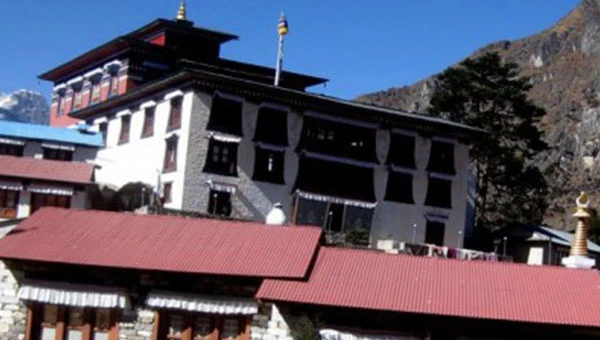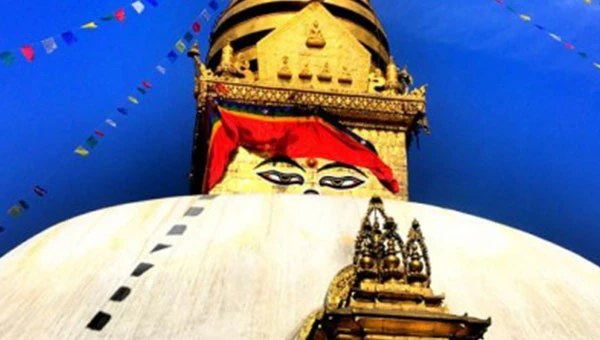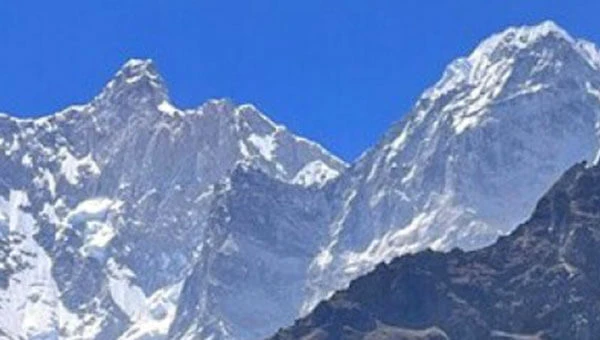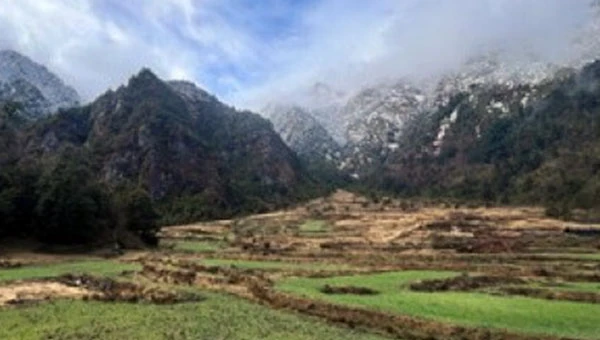Boudhanath Stupa is the elegant giant stupa located in Kathmandu Valley surrounded by all the aspects of urbanization. The area is crowded by concrete buildings, racing vehicles, screaming horns, and hyperactive humans carrying their works and stuff. As you see the gate of Boudhanath Stupa and enter the arena you won’t feel any of the chores of an urban area. Stepping inside the Boudhanath Stupa arena welcomes you with a chilly breeze sprayed with incense, magic mantras of devotees, colors of prayer flags, and the calm white dome with golden top touching the sky. Visitors always wonder about this place is so peaceful, spiritual, and pleasing despite its location in between concrete jungles and urban tantrums. The alluring structure, environment, and values attached to Boudhanath Stupa for centuries have enabled it as UNESCO World Heritage Sites.
Boudhanath Stupa
History, Legends, and Stories of Boudhanath Stupa
Turning the pages of Boudhanath Stupa’s history and stories, there are few legends and stories related to it however, there is uncertainty when the site became sacred.
Some legends tell that a great drought struck Kathmandu during the Lichhavi period. The king consulted with astrologers to mitigate the problem. Astrologers suggested the human sacrifice of male candidates having Battis Lakshan (Thirty-two perfectionist features). The King and his sons were the only suitable candidate. King decided to sacrifice himself and ordered one of his sons to behead a virtuous man waiting at a royal well on a moonless night. Prince followed the ordered and found he had sacrificed his own father. The head flew off to a place nearby Sankhu Bajrayogini Temple. With a heart filled with sorrows and regret prince asked Goddess Bajra Yogini how to amend his deed, she suggested to fly a bird and told him to erect a stupa at the place where it landed. The site was where Boudhanath is now located.
According to one Tibetan text, a daughter of Indra (Hindu God) stole flowers from heaven and was exiled to earth as a farmer’s daughter. She prospered on earth and decided to use her wealth to build monuments to honor Buddha of an earlier age. She requested land from a local ruler who provided land that could only covered the shelter of buffalo. Then, she cut the hide into extremely thin strips and tied together enclosed a large area upon which she was able to build a temple. Still another story related that initially Boudhanath stupa was built sometime around 600AD when Tibetan King Songsten Gompa converted to Buddhism.
Meaning of Boudhanath Stupa Structure
The date of its construction and the reason may be uncertain but the faith and values are certainly deep and high. It is also believed that the stupa probably contains Buddha’s bones, teeth, sacred texts, and other ceremonial objects. Bouddhanath Stupa is the 36-meter tall giant mandala or diagram of Buddhist cosmos is built on three-level Mandala style platforms. The whitewashed dome, gilded tower painted with all-seeing eyes of Buddha on all four sides and flying colorful flags makes the Bouddhanath Stupa a perfect blessing that spread peace, joy, and enlightenment to its devotees. The construction serves in essence as a three-dimensional reminder of Buddha’s path towards enlightenment;
- The Plinth is the lowest level of the stupa which is a square or terraced plinth representing earth. The four sides or four terraces represent the four states of mindfulness and immeasurable – love, compassion, joy, and calmness.
- The dome (Kumbha) above the plinth is a hemispherical dome symbolizing water. It is decorated with a pattern of yellow paint to represent lotus petals.
- The Square tower (Harmika) is above the dome symbolizing fire and painted on each side with the eyes of Buddha.
- The Spire tops the harmonica representing air as well as 13 levels of the spire represents the stages of Bodhisattva’s ground for enlightenment / achieve nirvana or Bodhi hence the name of the stupa.
- The Umbrella at the top is void or ether beyond space.
Additionally,
- Pinnacle is the symbol of Mt.Sumeru, King of Mountains (mountains above mountains),
- Lotus symbolizes self- development, enlightenment, and purity,
- Eyes; Buddha eyes and Wisdom eyes with the all-seeing ability of Buddha
- Nose symbolizes Nirvana as well as Nepali character 1 representing Unity
- Harika also symbolizes the eight noble paths; view, thought, speech, action, livelihood, endeavor, mindfulness, meditative concentration in the right way.
Prayer Flags believe to carry mantras and prayers heavenward and the color represents:
- White; purity and primordial
- Green; peace, protection from harm
- Yellow; beauty and wealth
- Blue; knowledge, awakening
- Red; love and compassion
Other Temples, Shrines, and Architecture at Boudhanath Stupa
There are 108 forms of Dhyani Buddha Amitabha are depicted and a ring of prayer wheels (craved with Om Mani Padme Hum) around the base of the stupa. Pilgrims circle the stupa in a clockwise direction each day and also spin every prayer wheel. It is said that each spin of the prayer wheel is the equivalent of reciting the mantra embossed on it eleven thousand times for peace and prosperity. So, walking one circuit of the stupa and spinning each of the 147 wheels thereby equals to 1,617,000 prayers, and for some pilgrims circling the stupa several times a day for years lead to billions of prayers. On the east side of the stupa, committed devotees prostrate themselves full-length on the ground in the courtyard and the north end of the stupa is the gateway to the upper level of the plinth where Amoghasiddhi, a progenitor of future Buddha and Buddha Maitreya, the future Buddha presides along with shrine of goddess Harati.
Though Bouddhanath Stupa is located around the urban area, as you entire the area you won’t feel the chaos of the city rather you will be covered by the wind passing through prayer flags, sounds guided by chanting mantras and accompanied by the devotees drown in their praying. You can also sit at the rooftop restaurant and enjoy the view as well as purchase the souvenir at different stores around the stupa. You can also try the local packaged snacks Khapsee (made with plain flour), freshly served Keema (minced meat of chicken and buffalo) noodle (available with only vegetables and egg), and cold noodle named as Laphing.
Both Swoyambhunath Stupa and Bouddhanath Stupa are dedicated to Buddha and his wisdom but each heritage site carries variant stories and architecture. You can choose to arrange the 2 Days Kathmandu Tour: Explore UNESCO World Heritage Sites. If travelers are in short of time, you can visit a few of the Heritage sites of Kathmandu with the support of Nepal Adventure Team, one of the tour and trekking companies. You can also customize your tour as per your flexibility and comfort. If you are physically active and interested in adventure, you can also enjoy “1 Day Kathmandu Cycle Tour: Cycling to UNESCO World Heritage Site”. Here, you explore Kathmandu Valley on a bicycle with the support of the experienced guide of the Nepal Adventure Team.
Entrance Fees:
- SAARC Nationals: NPR 100
- Chinese Nationality: NPR 400
- Foreign Nationals: NPR 400
- Nepalese Nationality: Free
Personal Tips
- Carry personal ID certificates (passports).
- It is better to carry a few cash while touring in Nepal.
- “Namaste” is widely practiced in Nepal so you can use Namaste instead of hello/hi to begin any conversation. Nepalese adore the foreigners using Namaste.
- If you lose your group/ tour guide, you can communicate with tourist police residing in every touristic area.
- Most of the Nepalese know the English language, so you can easily communicate with locals.
Do’s and Don’ts at Bouddhanath Stupa
- According to local custom, you can get into temples and holy places after taking off your shoes.
- Make sure you walk towards the stupa in a clockwise direction and also spin the wheels in a clockwise direction.
- Do not try to climb up the stupa and just walk in the lower arena which is open for visitors.
- Do not bring anything with furs, leather products inside the temples.
- Watch the notice for photography and do not take photos of temples/statue without permission. At some of the places you may not take your cameras and the authority will return your camera after your visit to the concerned area/temples/monument.
- Do not wear a hat/ cap inside holy places as a temple or while praying to gods in Nepal.
- Nepalese lit fire and incense which they regard as holy and religious so value it while visiting and do not litter at those areas. If you face allergy or difficulty due to the aroma of incense, you can use a mask to cover your nose and mouth.
- Do not touch any elements/assets with feet or stretch your feet towards them.





